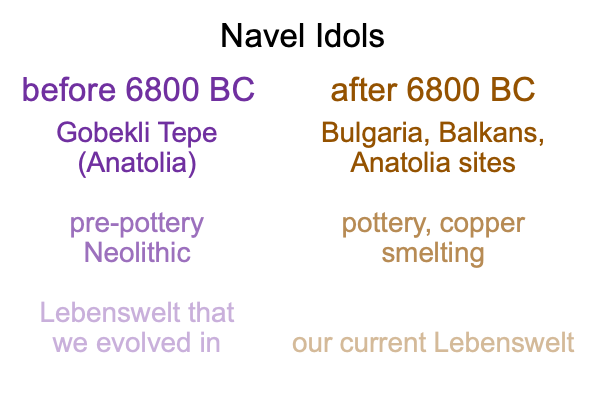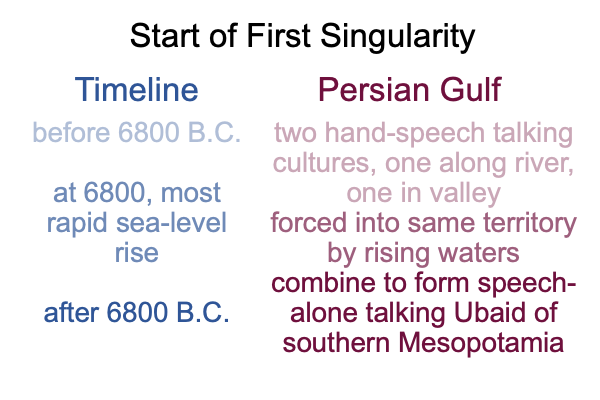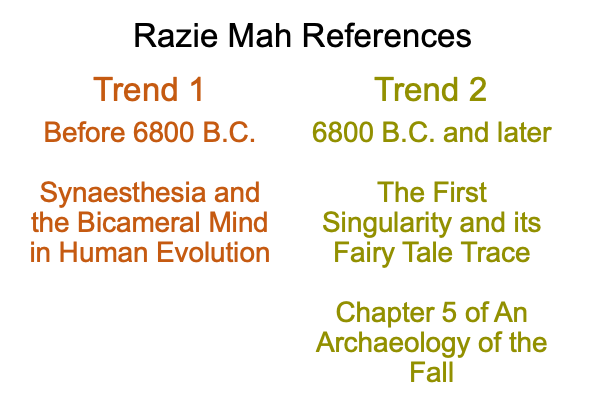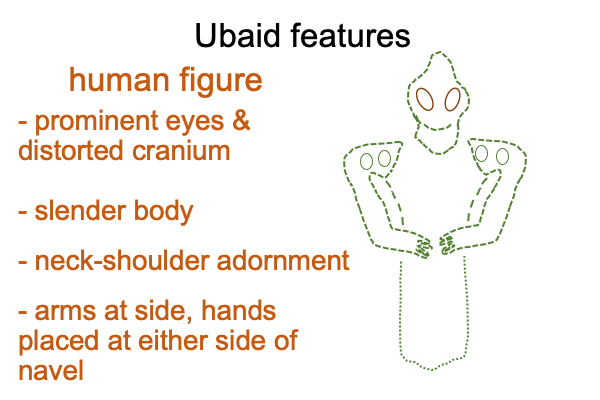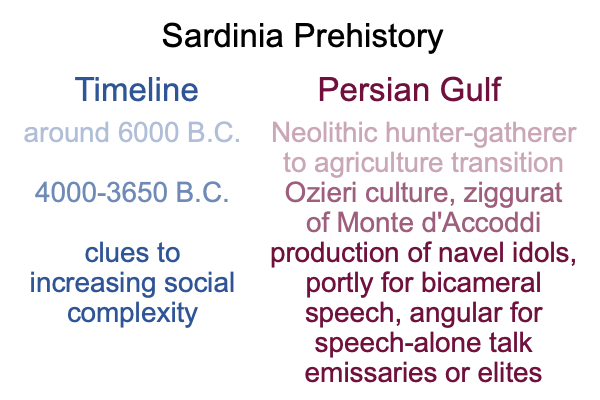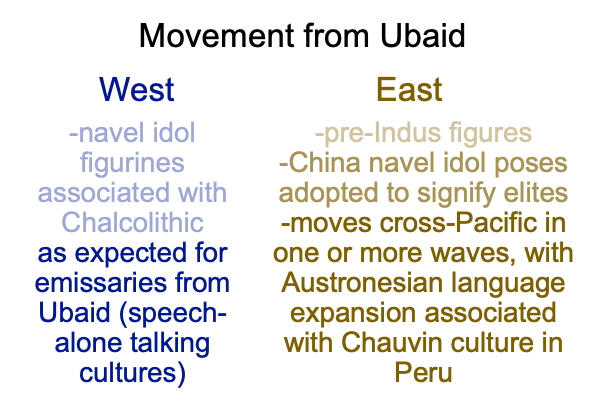Looking at Graham Langdon’s Book (2024) “The Mystery of the Navel Idols” (Part 1 of 4)
0001 The book before me is published by Archaic Lens Publishing (North Carolina). The author posts podcasts on youtube, writes on twitter, and has a website, www.archaiclens.com. The book’s subtitle is The Thread that Connects the Ancient World.
0002 The author documents navel idols that are readily identifiable to the human eye on the basis of several characteristics, as shown below.

0003 They appear at the dawn of history, in regions that will end up civilized, but before any advances in the direction of labor and social specializations. Later, the idols will associate to the Chalcolithic (the Copper Age), corresponding to the era before the Bronze Age (when copper is mixed with other ingredients to create effective weapons).
The oldest navel figure is Urfu man, recovered from Gobekli Tepe in Turkey (Anatolia) and dating to around 10,000 B.C. This is long before the end of the last interglacial. The megastructure site associates to the pre-pottery Neolithic, which comes before the pottery Neolithic. Subsequent Neolithic cultures throughout southwestern Asia will be labeled and identified on the basis of their pottery.
Also, Gobekli Tepe is not associated with a sedentary settlement, such as the contemporaneous Catal Huyuk.
0004 So, what am I saying?
Gobekli Tepe, Catal Huyuk and similar sites do not end up constellating into a tangle of unconstrained social and labor specializations, where social circles transmogrify into networks of economic and political-religious affiliations.
0005 In the section on Turkey, the author makes an interesting point. The body habitus of Urfu man appears in statuary and figurines in early civilizations around the world. The further from Gobekli Tepe, the later in time these navel idols appear.
Ironically, this point is precisely the rule of thumb held by archaeologists during the early twentieth century. The further from southern Mesopotamia, the later an early civilization forms.
0006 Coincidence?
Or is one observation swept up in the other?
0007 In the section on Turkey, the author includes a watercolor image of an awkward looking small artifact, with enormous alien-like eyes, v-neck adornment and hand on either side of navel. This clay figurine dates to around 5,000 B.C., during the copper age, according to the British Museum.
This artifact dates to 5,000 years after Gobekli Tepe.
The prehistoric cultures associated with the later artifact occur on the cusp of civilization, where the term, “civilization” is characterized by unconstrained labor and social specialization.
0008 A look at the sections on the Kosovo, Serbia and the Balkans support this association. The navel idols of the Vinca culture (5850-5750 B.C.) appear similar to the latter Turkey artifact. The Vinca culture practices farming, animal husbandry and copper smelting. A similar pattern occurs in Bulgaria. These cultures are on their way to increasing social complexity.
0009 The pattern will hold for all navel idols found to the west of the Aegean Sea. The navel idols and the Chalcolithic and other features, such as astronomy-related megalithic arrangements, spread west from southwestern Asia.
Since Gobekli Tepe is pre-pottery and pre-Chalcolithic, it cannot be the direct inspiration for the navel idol figures located the West, five millennia later. So, the old archaeologists’ saying of the early 20th century applies. Something from southern Mesopotamia sends out emissaries bearing the news of not talking with one’s hands, as well as copper manufacture and astronomy.
Indeed, it may be that the cultural efflorescence that builds Gobekli Tepe and other Anatolian sites spreads into northern, then southern Mesopotamia as the glacial climate gives way to the Wet Neolithic of southwestern Asia and northern Africa.
0010 The sea-level rise serves as a good way to demark the navel idols before pottery and copper and the navel idols after.
